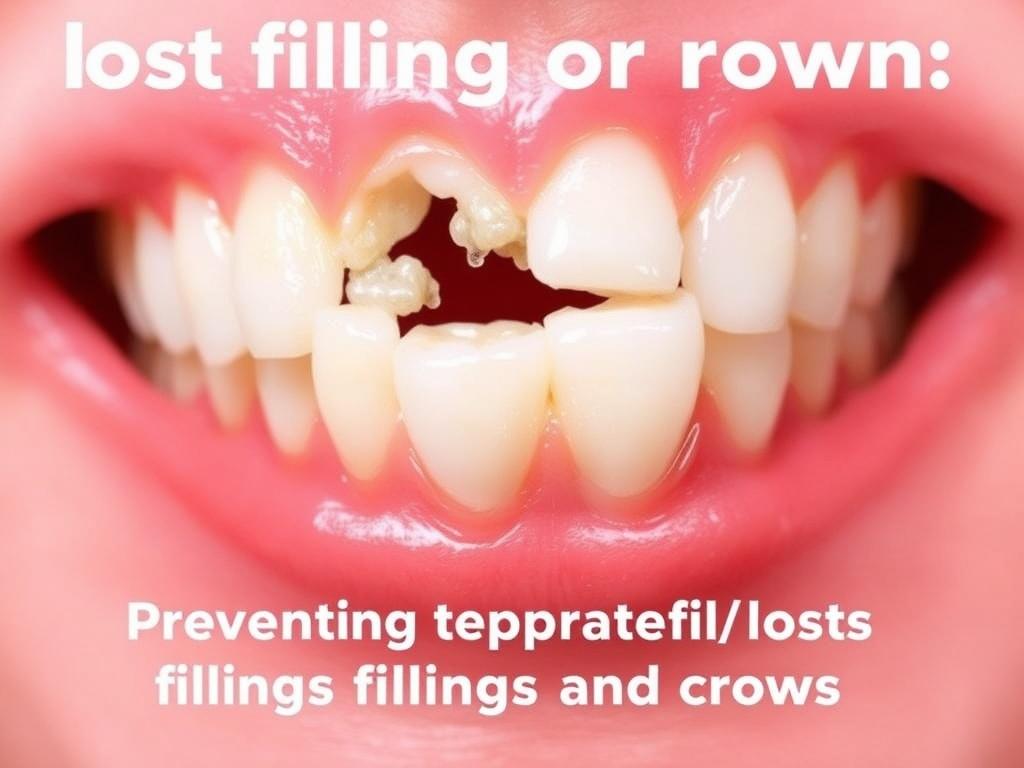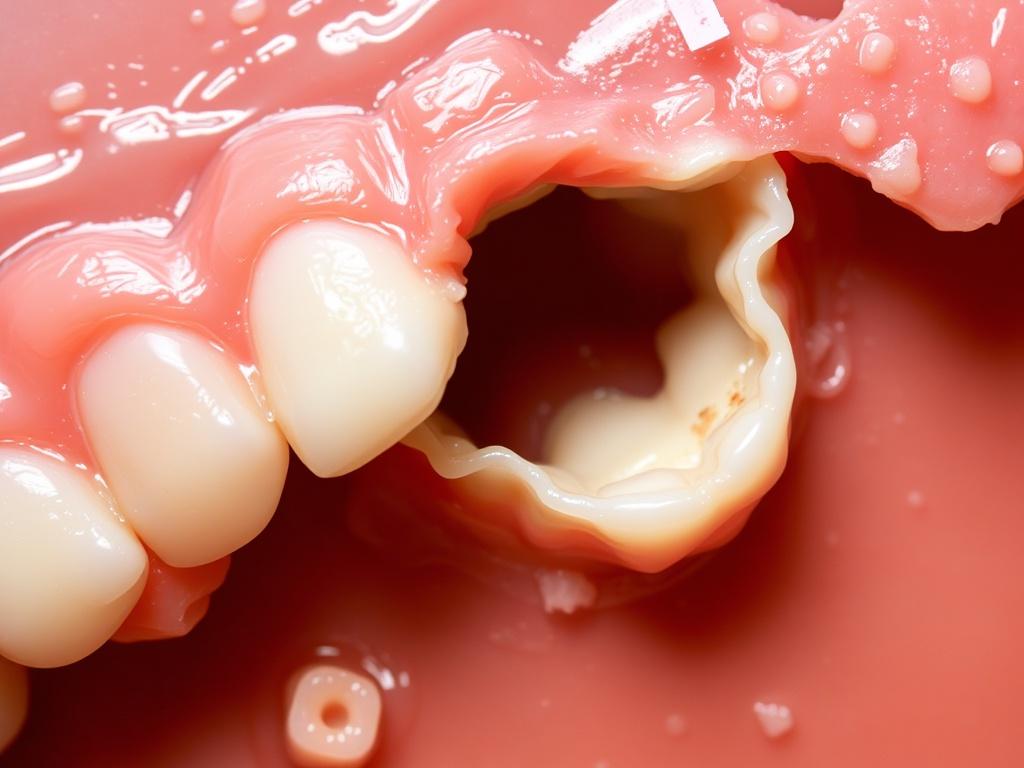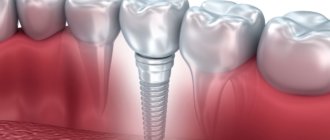Содержание
- 1 Understanding the Problem: What Happens When You Lose a Filling or Crown?
- 2 Immediate Steps to Take When You Lose a Filling or Crown
- 3 Temporary Fixes for a Lost Filling
- 4 Temporary Fixes for a Lost Crown
- 5 When to See the Dentist: Prioritizing Professional Care
- 6 Preventing Future Loss of Fillings and Crowns
- 7 Common Myths About Lost Fillings and Crowns
- 8 Tips for Staying Comfortable Until Your Dental Appointment
- 9 How to Talk to Your Dentist About Lost Fillings or Crowns
- 10 Summary Table: Temporary Fixes for Lost Fillings and Crowns
- 11 Final Thoughts
Understanding the Problem: What Happens When You Lose a Filling or Crown?
Losing a filling or crown can be a distressing experience. It usually happens suddenly—perhaps while enjoying a meal or even during routine brushing—and can leave you feeling uncomfortable or even in pain. But why does this happen in the first place? Dental fillings and crowns are designed to protect and restore damaged teeth, but over time, wear and tear, tooth decay, or improper fitting can cause them to loosen or fall out. Understanding the cause behind losing a filling or crown can help you take better care of your teeth and prevent future occurrences.
When a filling slips out, the tooth underneath is exposed, leaving it susceptible to sensitivity and further decay. Similarly, a lost crown exposes the underlying tooth structure, which can be painful or even cause chewing difficulties. While it’s essential to see your dentist as soon as possible after such an incident, immediate professional care isn’t always available. That’s why knowing some simple temporary fixes is invaluable to protect your smile and reduce discomfort until you can get proper treatment.
Immediate Steps to Take When You Lose a Filling or Crown
As soon as you realize you’ve lost a filling or crown, there are some practical steps you can take to minimize any damage or discomfort. First, carefully retrieve the filling or crown if possible, and keep it in a safe place. Sometimes, the dentist can reattach it, saving you time and money. Rinse your mouth gently with warm water to clear debris, and inspect the area for any pain, swelling, or sharp edges.
Avoid eating or chewing on the affected side to prevent further damage or irritation. If the exposed tooth feels sensitive, try to avoid extremely hot, cold, or sweet foods and beverages. Pain relievers such as ibuprofen can help manage discomfort temporarily. If you have dental cement at home (often available at pharmacies), it can be useful for temporary reattachment—but be careful and follow the instructions closely.
Here’s a quick checklist you can follow immediately after losing a filling or crown:
- Locate and save the lost filling or crown.
- Rinse your mouth gently with warm water.
- Avoid chewing on the affected side.
- Take over-the-counter pain medication if necessary.
- Try to see your dentist as soon as possible.
Temporary Fixes for a Lost Filling
When a filling falls out, the exposed tooth can feel sensitive, and food particles might get stuck easily. Here are some simple temporary fixes you can try if you lose a dental filling:
Using Dental Cement or Temporary Filling Material
Many pharmacies sell temporary dental fix kits containing dental cement designed for fillings. These kits are user-friendly and can be used to cover the exposed area, protecting the tooth and reducing sensitivity. To use this method:
- Clean the tooth gently with a toothbrush and rinse your mouth.
- Dry the tooth as best as you can with clean gauze or a tissue.
- Mix the dental cement according to the package instructions.
- Apply the cement carefully in the cavity where the filling was lost.
- Press and mold the material gently to fit the tooth surface.
- Allow it to harden as per the instructions before eating or drinking.
This temporary fix usually lasts a few days but is not a replacement for professional dental care. Be careful not to leave the cement on for too long without dental consultation.
A Homemade Remedy: Sugar-Free Gum or Wax
If you don’t have dental cement at hand, sugar-free chewing gum or dental wax can be used as temporary plugs. These won’t harden but can help protect the tooth from food debris and reduce sensitivity for a short time. Here’s how to use them:
- Choose sugar-free gum to avoid promoting tooth decay.
- Chew the gum until soft and moldable.
- Carefully press it into the cavity where the filling fell out.
- Alternatively, special dental wax from a pharmacy works similarly.
- Remember to remove these at night and replace if dislodged.
While this is only a very short-term fix, it can be a lifesaver if you cannot get immediate dental care.
Temporary Fixes for a Lost Crown

When a crown comes off, it exposes the tooth beneath and can cause discomfort, sensitivity, and additional risk of tooth damage. Temporary measures can help protect your tooth and crown until your dentist can permanently fix it.
Reattaching the Crown Temporarily
If you still have the crown, you might be able to put it back temporarily at home using dental cement or temporary adhesive. This can help keep the crown in place and prevent further damage or sensitivity.
Follow these steps carefully if you attempt this:
- Inspect the crown and tooth for any cracks or debris.
- Clean the crown by rinsing it in water. Avoid harsh soaps or chemicals.
- Brush the tooth surface gently to remove food and plaque.
- Apply a small amount of temporary dental cement to the inside of the crown.
- Gently seat the crown on the tooth, pressing firmly.
- Hold it in place for a few minutes until the cement sets.
- Avoid chewing hard foods and sticky substances on that side.
Remember, this reattachment is only temporary, and trying to force the crown back without the right materials or technique can cause further problems.
Protecting the Tooth if You Can’t Reattach the Crown
If you cannot reattach the crown, or if the tooth is too sensitive or painful, you can protect it using dental wax or sugar-free gum as a temporary cover. These materials cushion the exposed area and reduce irritation from food and air.
Also, avoid eating sticky or hard foods and maintain great oral hygiene to prevent infection.
When to See the Dentist: Prioritizing Professional Care
While temporary fixes can help manage discomfort and prevent immediate damage, they are not permanent solutions. It’s crucial to see your dentist promptly if you’ve lost a filling or crown. Delaying treatment can lead to further decay, infection, or even tooth loss.
During your visit, the dentist will assess the condition of the tooth and the lost dental work. Sometimes, fillings can be replaced or repaired quickly. Crowns may need recementing or, in cases of damage, remaking. Early intervention often means less complicated and less costly treatments.
If pain, swelling, bleeding, or fever develops, seek emergency dental care immediately as these can be signs of infection.
Preventing Future Loss of Fillings and Crowns

While accidents happen, there are steps you can take to reduce the chances of losing a filling or crown again. Here are some tips to keep in mind:
| Tip | Why It Matters |
|---|---|
| Avoid Hard or Sticky Foods | They can loosen or damage fillings and crowns. |
| Practice Good Oral Hygiene | Keeps teeth healthy and prevents decay under restorations. |
| Wear a Mouthguard for Grinding | Protects teeth from excessive pressure and damage. |
| Visit Your Dentist Regularly | Early detection of any issues can prevent loss. |
| Be Gentle When Brushing and Flossing | Prevents loosening restorations. |
By following these practices, you can prolong the lifespan of your dental work and avoid the discomfort and inconvenience of losing a filling or crown.
Common Myths About Lost Fillings and Crowns
There are a few misconceptions surrounding lost fillings and crowns that can cause unnecessary worry or inappropriate responses. Let’s debunk some of these common myths:
- Myth: Losing a filling or crown means my tooth is ruined forever.
Fact: Many times, dentists can repair or replace lost restorations, saving your tooth. - Myth: You should ignore a lost filling or crown if there is no pain.
Fact: Even without pain, an exposed tooth is vulnerable to damage and needs assessment. - Myth: You can permanently reattach a crown at home.
Fact: Only a professional can properly cement and fit a crown to avoid further issues. - Myth: Using super glue is a safe temporary fix.
Fact: Never use household adhesives to fix dental work; they are toxic and unsafe.
Awareness and understanding of what to do help reduce anxiety and ensure the best outcome when dental problems arise.
Tips for Staying Comfortable Until Your Dental Appointment

Besides temporary fixes, managing comfort while waiting for your dental visit is essential. Here are some practical tips:
- Use Cold Compresses: Apply a cold pack outside your cheek to reduce swelling or pain.
- Stick to Soft Foods: Avoid crunchy, hard, or sticky foods that can aggravate the area.
- Maintain Oral Hygiene: Carefully clean your teeth without disturbing the affected area.
- Avoid Hot or Cold Drinks: Extreme temperatures may trigger sensitivity.
- Sleep with Your Head Elevated: This can help decrease throbbing pain.
Following these simple steps can make a significant difference in how you cope after losing a filling or crown.
How to Talk to Your Dentist About Lost Fillings or Crowns
When you visit your dentist, clear communication is key to getting the best treatment. Here’s how to prepare for your appointment and what to tell your dentist:
- Explain how and when the filling or crown was lost.
- Describe any pain, discomfort, or sensitivity you’re experiencing.
- Mention any temporary fixes you have tried.
- Ask about options for repair or replacement and potential costs.
- Inquire about prevention techniques and products you can use at home.
Being well-prepared ensures you and your dentist make informed decisions together.
Summary Table: Temporary Fixes for Lost Fillings and Crowns
| Lost Restoration | Temporary Fix | Duration | Precautions |
|---|---|---|---|
| Filling | Dental cement or temporary filling kit | Few days | Avoid hard foods; see dentist ASAP |
| Filling | Sugar-free gum or dental wax | Hours to a day | Replace frequently; remove before sleeping |
| Crown | Dental cement to reattach temporarily | Several days to a week | Chew carefully; avoid sticky foods |
| Crown | Sugar-free gum or dental wax cover | Short term only | Monitor discomfort; schedule urgent dental visit |
Final Thoughts
Losing a filling or crown can be unsettling, but understanding quick, easy, and safe temporary fixes can help you manage the situation calmly while waiting to see your dentist. Utilizing dental cement or temporary kits, using sugar-free gum or dental wax, and protecting the exposed tooth area reduces discomfort and prevents further damage. Always avoid harmful household adhesives, and prioritize professional dental care to restore and safeguard your teeth properly. With the right knowledge and some simple supplies at home, you can navigate this dental emergency with confidence and ease until your smile is fully restored.




